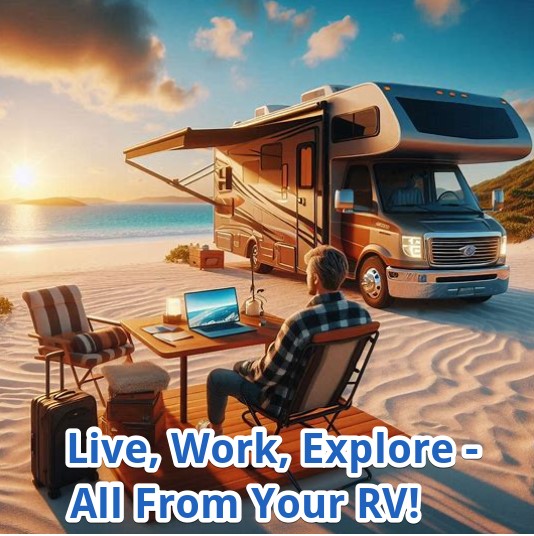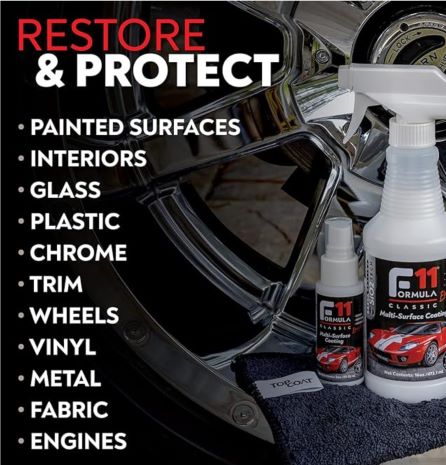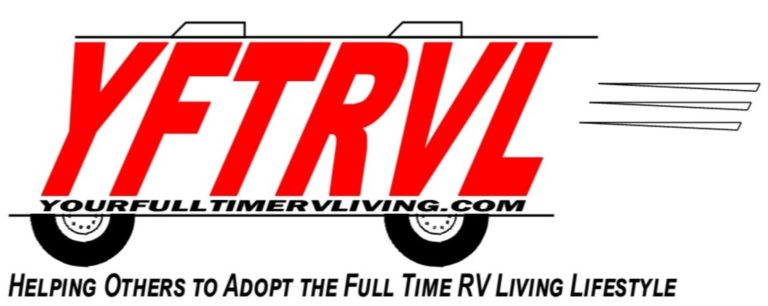If you’re thinking about a big lifestyle change, living full-time in an Airstream might be something you’ve looked into. The idea of simplifying things, cutting down on your expenses, and seeing different parts of the country is definitely appealing.
But the switch from a traditional house to a shiny home on wheels comes with a list of new costs, options, and decisions. Here’s a breakdown of what you need to think about if you want to know if Airstream life matches your dreams and your wallet.
Understanding the True Costs of Full-Time Airstream Living
Costs tied to Airstream life go way beyond the sticker price of your trailer. The full picture includes where you’ll park, how you’ll stay connected, repairs, insurance, travel gas, and all your day-to-day spending. Sometimes Airstream living cuts your costs. Other times, you might swap old bills for new ones you didn’t expect.
A brand new Airstream can be pretty expensive; think anywhere from $65,000 to well over $200,000. Used Airstreams sometimes cost half as much, depending on age and condition. But the spending doesn’t stop once you buy. Registration, property taxes on your rig, and insurance add up.
What about a tow vehicle capable of handling the heavy tongue weight of most Airstream RVs? If you don’t have one, that is, that is another cost you will have to factor in.
Monthly insurance prices usually range from $75 to $200, depending on the trailer’s value and where you travel. Maintenance is also a big one. Living in your trailer full-time puts steady wear and tear on the systems, so routine maintenance (like resealing windows or keeping your plumbing and electrical systems in good shape) is unavoidable.
Can Full-Time RV Life Be Cheaper Than Living in a House?
The cost of parking varies a ton. Campgrounds with hookups are pretty comfy, but they run anywhere from $35 a night to over $120 in really popular areas or during busy seasons. Some folks save cash by boondocking (parking for free on public land and running on solar power), but that comes with its own set of gear costs and limits.
Then there’s fuel. Gas or diesel bills depend totally on how often you tow and how far you roam, but weekly fill-ups aren’t rare, especially on cross-country drives.
Other regular costs crop up, too. You’ll likely spend more on laundromats and propane for heating or cooking. Some people budget for campground memberships to save money at chains. Internet access is another big piece; working families and remote workers need strong cell plans or WiFi gear, which can mean anywhere from $70 to $200 a month.
Don’t forget, if you want to run air conditioning or keep warm in chilly mountain areas, energy use can increase your monthly totals, too.
The true cost of full-time RV living compared to traditional options can either be an advantage or not. It depends on where you are living now!
We left a large mountain home in Colorado for full-time RV life. Needless to say, it would not be hard to cut costs in that scenario. But if someone is living in a small apartment, RV life could be more costly on a monthly basis.
For us, it was not about cost comparisons but about a different style of life: living wherever the road could take us while running a small business out of our RV.
Getting Started with Airstream Life: First Steps and Things to Know
Before jumping straight into Airstream living, there’s a learning curve to get around. Picking the trailer itself is just part of the equation. You have to figure out the right tow vehicle, learn about towing safely, and get ready for the quirks of living in a small space that moves.
Choosing your trailer is one of the big decisions. A smaller Airstream is easier to move and fits into more campsites, giving you more options. Larger models provide more room for work, hobbies, or family, but they cost more to buy, burn more fuel, and may limit where you can go.
The right tow vehicle is just as important as the trailer. Full-size trucks and some SUVs with heavy-duty tow packages are really popular since you want something powerful, reliable, and safe. If you don’t plan carefully, costs sneak up fast with gas, routine service, and tires, all of which wear out more quickly when towing a heavier trailer.
Living in a smaller space means you need to downsize. That means sorting, storing, selling, or donating a bunch of your stuff. Swapping closets, garages, and pantries for underbed bins and multipurpose furniture is a big step. I found that it helps to start practicing small, like a weeklong trial in an Airstream rental or even going tent camping to get a taste for daily routines.
Want to cook inside when it rains, get cozy in the evenings, or take long showers? It’s worth checking out how these normal routines play out in 200 square feet. Trying out Airstream life temporarily helps you figure out what you really need and what you can live without.
Getting mail, health care, and a permanent residency sorted out is also part of the first steps. A lot of fulltimers use mail forwarding services or trusted friends and family for handling official documents.
Researching RV-friendly insurance plans and telehealth options keeps things less stressful on the road. Understanding your state’s rules if you need to pick a “domicile” for legal purposes can also be important.
Major Pros and Cons to Think About Before Hitting the Road
It’s fun to imagine chasing sunsets or parking by a mountain lake or on the beach, but there are practical pieces to the Airstream lifestyle you should weigh honestly. Knowing the benefits and drawbacks helps make the big decision much clearer.
- Pro: Freedom to Travel. You get to explore at your own pace, stick around places you love, or move on when you’re ready for a change. Running a small business from an RV makes this even easier!
- Pro: Simpler Living. Less clutter, fewer bills, and buying fewer “things” over time can help you keep spending in check and focus on experiences.
- Pro: Community. Meeting like-minded travelers online and at campgrounds or rally events adds a cool social layer to life on the move.
- Con: Repairs and Upkeep. Things break or wear out, and finding reliable RV repair shops or mobile RV tech isn’t always easy. Sometimes you need to learn a few repair skills yourself.
- Con: Smaller Living Space. Privacy, storage, and personal space can become quite limited, especially for couples or families.
- Con: Unpredictable Costs. Unexpected repairs, seasonal campground rates, or travel expenses can be high at times. At the time of this writing, a campground in northern Michigan for a week in late June cost us $680 for a week. That’s a deluxe pull-through RV site: the only one left.
The everyday upsides are big; you get flexible travel and a chance to live simply. But challenges around maintenance, privacy, and steady costs need careful thought. Even the best setups have down days. Weather turns sour, campsites fill up, or things go wrong mechanically, so patience and a sense of humor really help.
Budgeting for Full-Time Airstream Living
Building a solid Airstream budget depends a lot on your style, your travel pace, and what comforts you want to keep. Some people live comfortably on $1,500 a month or less, while others easily spend over $4,000 with premium campgrounds, regular on-the-road meals, and lots of miles.
Others prefer finding balance by alternating between several nights of free camping and a week in a paid, amenity-rich RV park, where they can handle chores and enjoy extra comforts.
Core monthly costs to budget for:
- RV Payment. If financed, usually $300 to $1,200 (less for used trailers or owners who paid cash).
- Insurance & Registration. $75 to $200 for insurance; registration can be an annual cost of $50 to several hundred, depending on your state or domicile.
- Campground Fees. $700 to $1,800 for paid monthly spots; much less if you mix in some boondock camping.
- Fuel. $150 to $700, depending on distance traveled each month.
- Internet/Cell. $70 to $200, depending on setup and needs.
- Maintenance. Budget at least $100 to $300 per month for expected and unexpected repairs.
- Food, Propane, and Fun. Groceries, take-out, propane refills, activities, and tours.
Adding in health insurance, laundry, mail forwarding, and other services gives a realistic total. Tracking spending for the first few months helps you adjust and spot patterns. Keeping some emergency funds on hand means less stress when unexpected repairs or surprises arise.
Some full-timers suggest setting aside a few hundred dollars monthly just for unplanned costs. Keeping digital expense trackers or budgeting apps can help you keep an eye out for trends and discover ways to trim unnecessary spending. Over time, you’ll develop a rhythm that works for your preferences and needs.
Advanced Realities: What Fulltime Airstreamers Wish They Knew First
Many seasoned Airstreamers talk about learning new skills they never thought they’d need. Quick problem-solving, weather monitoring, DIY plumbing or electrical tinkering, and handling campground etiquette all become part of daily life. If you work remotely, a steady routine and good workspace matter as much as a solid WiFi hotspot. Family routines, pet care, and finding local doctors become ongoing pieces of the puzzle.
The transition takes time, and embracing flexibility is extremely helpful. Some days might go smoothly, with a lakeside sunrise and a breeze. Others might be filled with tire blowouts or broken appliances.
Meeting the community helps because you can swap stories and tips. Facebook groups, forums, and campground conversations turn out to be pretty handy for fixing issues on the fly and learning what routes or campgrounds to try, or skip. You quickly realize you don’t need as much stuff as expected, which feels liberating. You can always stop and rent an Airbnb or hotel if you want a break; no judgment needed.
Don’t underestimate self-care and downtime. Long-term travel means setting a comfortable daily pace and making time for hobbies, exercise, and quiet moments. Even laundry day or grocery runs can double as a mini adventure when you’re exploring a new area. Small rituals like morning coffee under the awning or evening walks around new campgrounds help make life feel a bit more grounded, wherever you are.
Frequently Asked Questions About Full-Time Airstream Life
People always have a few questions before making the switch. Here are some of the top ones I get, and my straightforward answers.
Question: Do you save money living full-time in an Airstream?
Answer: Sometimes, yes; but not always. You can save if you skip expensive RV parks, stick to a slower pace, and handle most repairs yourself. Expenses can stack up quickly with premium campgrounds, travel fuel, and gear upgrades. Careful budgeting makes a big difference.
Question: Is it hard to get mail on the road?
Answer: It can be tricky at times. Mail forwarding services (MY RV Mail is part of Passport America, a discount camping club) or using friends and family to help. Many campgrounds allow package delivery, but rural areas take more planning. I keep important documents digital when possible, which really helps.
Question: What happens if you get sick or need a doctor?
Answer: A lot of fulltimers use telehealth services or pick up local urgent care visits. Health insurance options that cover you nationally are really important to check. I keep my old doctors in the loop for virtual questions when needed.
Question: Can you work online from an Airstream?
Answer: Absolutely, but you’ll need to invest in a strong cell signal booster or Starlink internet for remote areas. A dedicated workspace, a comfortable chair, and a decent power supply turn your trailer into a cozy office. I travel to spots with both great views and solid cell coverage when a project is due.
Final Thoughts
Airstream life is all about freedom, flexibility, and finding what you value most. Some days are restful and inspiring, others present challenges you never saw coming. If you do your research, know your real costs, and stay open to new routines, living full-time in an Airstream can be both affordable and rewarding. Just remember, it’s not really about saving the most money. It’s about choosing the way you want to live every single day!
____________________________________________
Curious about more RV and Airstream living tips? Click here for more.
Feel free to leave a question or comment below if you want to learn more about the Airstream lifestyle.
If you’re interested in working remotely while traveling, I break down the details of RV internet and online income here.
Remote work opens up a bunch of possibilities, and it fits right in with full-time Airstream life!
________________________________________________________________
To learn more about us, click here.
Please feel free to ask a question or leave a comment before you read other articles on our website.
Pam and I hope that while you enjoy the RV lifestyle, you also run an online business from your RV! We do!!
With great RV connectivity, as discussed on this website, you can easily make money while traveling to whatever destination you desire.
Would you like to create an income while enjoying RV travel?
Is there something that you are passionate about? You can create an online business that you can run anywhere. I can help you do that!
=====> CREATE AN ONLINE BUSINESS FROM SOMETHING YOU LOVE TO DO! <=====













Recent Comments